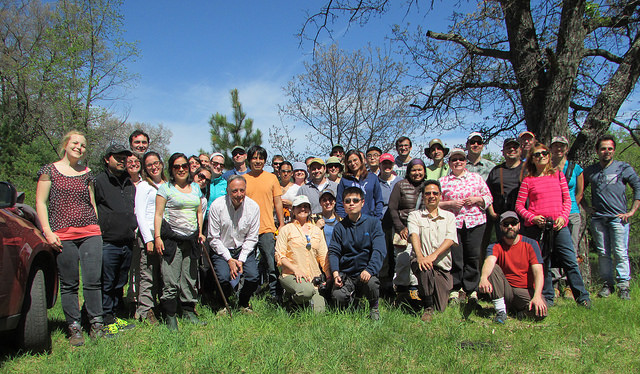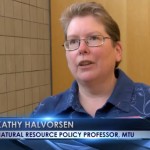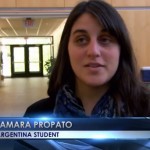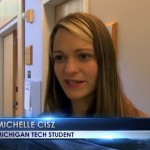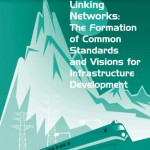 Bruce E. Seely, Dean of the College of Sciences and Arts contributed The Challenges of Transportation Integration in the U.S.A., 1890-1960, (pp. 229-47) in “Linking Networks: The Formation of Common Standards and Visions for Infrastructure Development” edited by Martin Schieflebusch and Hans Liudger-Dienel. (Ashgate Publishing, 2015).
Bruce E. Seely, Dean of the College of Sciences and Arts contributed The Challenges of Transportation Integration in the U.S.A., 1890-1960, (pp. 229-47) in “Linking Networks: The Formation of Common Standards and Visions for Infrastructure Development” edited by Martin Schieflebusch and Hans Liudger-Dienel. (Ashgate Publishing, 2015).
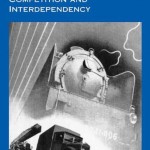 Bruce E. Seely, Dean of the College of Sciences and Arts, contributed the chapter Inventing the American Road: Innovations Shaping the American Freeway, (pp. 233-73), in “From Rail to Road and Back Again? A Century of Transport Competition and Interdependency,” edited by Ralf Roth and Colin Dival (Ashgate, 2015).
Bruce E. Seely, Dean of the College of Sciences and Arts, contributed the chapter Inventing the American Road: Innovations Shaping the American Freeway, (pp. 233-73), in “From Rail to Road and Back Again? A Century of Transport Competition and Interdependency,” edited by Ralf Roth and Colin Dival (Ashgate, 2015).
Seely and Atsushi Akera, associate professor in the Department of Science and Technology Studies at RPI, contributed to the chapter A Historical Survey of the Structural Changes in the American System of Engineering Education, in “International Perspectives on Engineering Education: Engineering Education and Practices in Context,” edited by Steen Hylgard Christensen, (Springer, 2015).
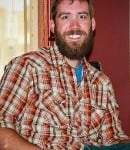 Chris Henderson, MS student in Environmental and Energy Policy, won the Rural Sociological Society’s Natural Resource Research Group’s Student Paper Award for his paper entitled “A Quantitative Analysis of County Hunting Trends in Michigan.” Chris will present this paper at the Rural Sociological Society’s annual meeting in Madison, Wisconsin on August 9, 2015. The award comes with a $100 cash prize.
Chris Henderson, MS student in Environmental and Energy Policy, won the Rural Sociological Society’s Natural Resource Research Group’s Student Paper Award for his paper entitled “A Quantitative Analysis of County Hunting Trends in Michigan.” Chris will present this paper at the Rural Sociological Society’s annual meeting in Madison, Wisconsin on August 9, 2015. The award comes with a $100 cash prize.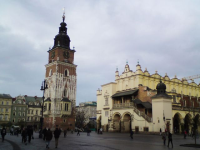 Mary Durfee (SS) gave a paper, “TTIP, CETA and the Arctic: Social and Environmental Indicators in the EU’s Trade Impact Assessment Process” at the Interdisciplinary Approaches to Security in the Changing World conference held in Krakow, Poland, June 18-20, 2015.
Mary Durfee (SS) gave a paper, “TTIP, CETA and the Arctic: Social and Environmental Indicators in the EU’s Trade Impact Assessment Process” at the Interdisciplinary Approaches to Security in the Changing World conference held in Krakow, Poland, June 18-20, 2015.
Durfee led the discussion on the Food, security, and free trade panel, as well as chairing the panel on Security of Global Commons.
 Members of the Department of Social Sciences and the School of Forest Resources and Environmental Science (SFRES) attended the recent 2015 International Symposium on Society and Resource Management (ISSRM). The event took place in Charleston, SC, June 13-18, 2015.
Members of the Department of Social Sciences and the School of Forest Resources and Environmental Science (SFRES) attended the recent 2015 International Symposium on Society and Resource Management (ISSRM). The event took place in Charleston, SC, June 13-18, 2015.
Participants included nine graduate students in the Environmental and Energy Policy (EEP) program, Erin Pischke, Mayra Sanchez, Brad Barnett, Zoe Coombs, Aparajita Banerjee, Chris Henderson, Jenny Dunn, Erin Burkett, and Rhianna Williams, and Andrew Kozich of SFRES. Also attending were Professor Kathy Halvorsen, Associate Professor Richelle Winkler, and ISSRM 2016 Conference Coordinator/Ecosystem Science Center Research Scientist Jill Fisher.
The conference is the annual meeting of the International Association for Society and Natural Resources (IASNR). IASNR is an interdisciplinary professional association open to individuals who bring a variety of social science and natural science backgrounds to bear on complex environment and natural resource issues.
Michigan Tech students created the newest IASNR student chapter. The new student chapter, named the Association of Students for People, Environment and Nature (ASPEN), was represented by a team of EEP students in the ISSRM 2015 Quiz Bowl.
Michigan Tech will host ISSRM 2016 from June 22 to June 26. The symposium theme is Transitioning: Toward Sustainable Relationships in a Different World. The conference coordinator is Jill Fisher, and the co-chairs are Kathleen Halvorsen and Richelle Winkler.
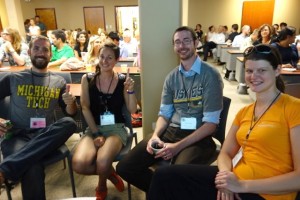
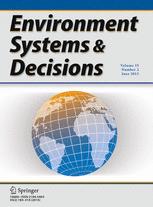 Joshua Pearce (MSE/ECE) and Richelle Winkler (SS) coauthored “Resilience to Global Food Supply Catastrophes”, published in Environment, Systems, and Decisions.
Joshua Pearce (MSE/ECE) and Richelle Winkler (SS) coauthored “Resilience to Global Food Supply Catastrophes”, published in Environment, Systems, and Decisions.
http://dx.doi.org/10.1007/s10669-015-9549-2
PI Patrick Martin (SS) and Co-PI Daniel Trepal (SS) have received a $39,866 grant from the Grand Portage Reservation Tribal Council for the project titled National Historic Landmark Nomination, Minong Mine, Isle Royale National Park, Keweenaw County, Michigan.
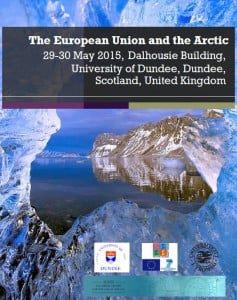 On Friday, May 29, 2015, Associate Professor Mary Durfee (SS) gave an invited paper, The EU in the Arctic: Where will it live? at a conference on the EU in the Arctic held in Dundee, Scotland.
On Friday, May 29, 2015, Associate Professor Mary Durfee (SS) gave an invited paper, The EU in the Arctic: Where will it live? at a conference on the EU in the Arctic held in Dundee, Scotland.
The European Union and the Arctic (2015 EU-Arctic Conference)
This conference will bring together academics and practitioners from relevant disciplines such as international law, international relations, political science and marine biology, NGOs, representatives from EU institutions and international organisations to discuss the EU’s potential contribution to enhance Arctic governance. A roadmap for increasing the effectiveness of the EU’s action in the Arctic will be drawn at the end of the conference.
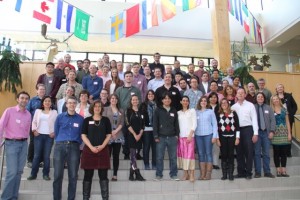
VIEW THE BIOMASS PIRE FLICKR PHOTO GALLERY
About 40 biofuel and bioenergy researchers from many countries in the Pan American region (from Argentina to Canada) will attend a workshop hosted by the Sustainable Futures Institute at Michigan Tech Wednesday, June 3, 2015, through Friday, June 5, 2015.
The goals of the workshop are to develop a research roadmap report (RRR) with diverse international perspectives and to recommend priority areas for future research. The RRR will be disseminated to funding agencies such as the National Science Foundation, Department of Energy and other federal research sponsors in the United States and their equivalents in other Pan American countries, as well as to industry and the general public.
This is the final workshop in the NSF-funded project “RCN-SEES: A Research Coordination Network on Pan American Biofuel and Bioenergy Sustainability“. The project is directed by David Shonnard (ChE) and with co-investigators Barry Solomon (SS), Kathy Halvorsen (SS), Sam Sweitz (SS) and Robert Handler (SF I).
From Tech Today, by David Shonnard.
Bioenergy Across the Americas
The work is part of the Partnerships for International Research and Education (PIRE), funded by the National Science Foundation (NSF). Kathy Halvorsen, a professor of natural resource policy at Michigan Tech, helps lead the PIRE research group, which is highly interdisciplinary.
“As we move forward with the project spanning six countries, I am always thinking about how are we going to be able to answer our research questions,” Halvorsen says, adding the project spans social, natural and engineering sciences. “We have to think about how we do our research so we can compare and integrate our data across the countries and disciplines.”
Read more and listen to audio at Michigan Tech News, by Allison Mills.
Biomass bridge
Vital aspect in achieving energy sustainability
Barry Solomon, a Tech professor on the PIRE team, noted that Brazil introduced the flex-fuel car engines now seen across the U.S. that can burn both high-ethanol and low-ethanol gas blends, and that bio-based ethanol has been a major boon to an economy that’s contributed to steady growth in recent years.
“The U.S. talks about energy independence, but it’s not (independent),” he said. “Brazil essentially is.”
Read more at the Mining Gazette, by Dan Roblee (subscription required).
Woody
U.P. bioelectric effort can follow Wisconsin’s lead
Regardless of the questions yet to be answered, Solomon said he sees biomass as an important part of the U.P.’s electric generation future.
“Biomass should be a part of things here,” he said. “There’s not a massive demand, but it’s far better to get rid of coal. … I think we need a combination of biomass and wind power.”
Read more at the Mining Gazette, by Dan Roblee (subscription required).
MICHIGAN TECH HOSTS FOREST BIOENERGY RESEARCHERS
A project this large can be unwieldy, so Halvorsen works with subgroup and country team leaders to effectively pursue their interdisciplinary research in bioenergy. Studying bioenergy naturally builds off multiple disciplines and goes beyond just the global biofuels discussion.
Read more at Technology Century, by Matt Roush.
Bioenergy across the Americas
In some ways, the PIRE research is like bioenergy yoga, looking at the best ways to build both flexibility and strength to move gracefully through changing climates and economic markets. From small plantations to spanning continents, the PIRE research seeks sustainability and resiliency using the insight of many disciplines.
Read more at ECN Magazine, by Allison Mills.
MICHIGAN TECH LEADS ON BIOENERGY
Sounds of Research
Michigan Tech has uploaded audio recordings of conversations with various researchers involved in the project — check out their Soundcloud account if you’re interested in hearing them.
Read more at Science Around Michigan.
MTU bioenergy: teaching the world
The U.P. is leading the effort to not just preserve natural resources, but to put them to work. The work is part of the partnerships for international research and education through the National Science Foundation.
Richelle Winker (SS)/Ecosystem Science Center, has received $39,000 in a Co-op/Joint Agreement-Cost, from the US Dept. of Agriculture, Forest Service for the project, Longitudinal Analysis of Population Redistribution by County Type and in Relation to National Forest and Public Lands.
